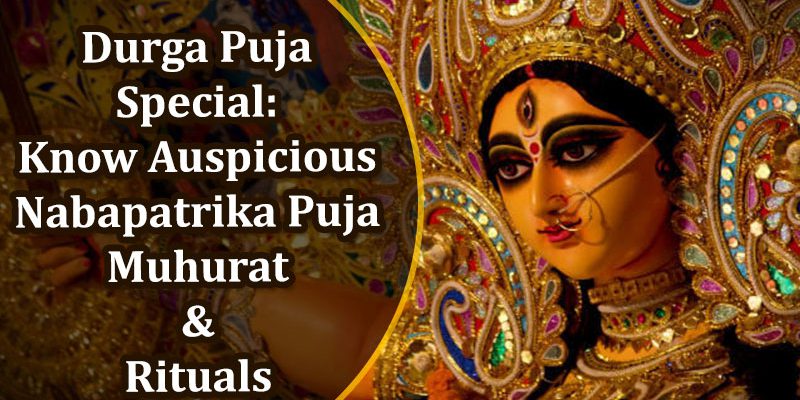Nabapatrika Puja during Durga Puja will procure desired results! Read the mythological significance and puja rituals to be followed.
Nabapatrika Puja marks the initiation of the first day of Durga Puja and is also known as Maha Saptami. It is derived from two words, “Nab” + “Patrika”, which translates to NIne Plants. It is popularly performed by farmers who wish to be blessed by the Goddess Navpatrika with a lavish and yielding harvest. Know the auspicious muhurat, puja rituals, significance of Nabapatrika Puja during Durga Puja and which nine planets are worshipped under this ritual.
Read in Detail: Nabapatrika Puja Rituals
Nabapatrika Puja Muhurat
|
Navpatrika Puja Muhurat For New Delhi, India |
|
| Saptami Tithi Begins | 09:37:26 on October 4, 2019 |
| Saptami Tithi Ends | 09:53:11 on October 5, 2019 |
Note: This time duration is applicable for New Delhi. Click here to know yours.
Significance of Navpatrika Puja
Navpatrika Puja, famously known as Kolabou Puja, is a prominent festival observed in the states of Assam, West Bengal and Orissa. Nine different kinds of plants, which are believed to be different manifestations of Goddess Durga, are used to carry out the worship the Goddess herself on this day. Nabapatrika is a bundle of nine leaves from nine sacred plants bundled together. Below is a quick list of those plants along with the name of the incarnations they signify.
Nine Plants Used For Nabapatrika Puja
- Banana Stem: This plant represents Goddess Brahmani.
- Kachvi: This plant represents Goddess Maha Kali.
- Turmeric or Haldi: This plant represents Maa Durga.
- Bilva Leaves: This plant represents Lord Shiva.
- Barley: This plant represents Goddess Karttika.
- Pomegranate: This plant represents Goddess Raktadantika.
- Asoka: This plant represents Goddess Sokarahita.
- Manka: This plant represents Goddess Chamunda.
- Dhan: This plant represents Goddess Lakshmi.
Installation of Nabapatrika
Tie or wrap up the nine leaves, a symbol of human life, altogether in a red or white sari and bathe it with Gangajal or in a sacred river body. Then install it on a wooden platform on the day of Maha Saptami on the right side of the idol or picture of Maa Durga. Offer unhusked rice to it, as it naturally represents Maa Laxmi.
Nabapatrika Puja Vidhi
- The Nabapatrika Puja or Maha Saptami puja begins with the Kolabou Snaan or Maha Snaan. Performing the Maha Snaan by tying all the nine leaves together enables the devotees to attain the blessings of Goddess Durga.
- Adorn the Nabapatrika with a white and red-bordered saree.
- Perform the Praan Pratishtha ritual and place the Idol of the Goddess at the altar.
- Now, carry out the Shodashopachara Puja.
- Worship the Goddess, and offer her flowers, sandalwood, fruits and water.
- In the end, perform the Maha Aarti and distribute the Prasad.
Mythological Legend
In mythology, the significance of Navpatrika Puja is also mentioned. It is believed that Kolabou, also known as Navapatrika, was the wife of Lord Ganesha and the biggest devotee of Goddess Durga. She used to venerate the divine goddess using nine different forms of plants’ leaves during Durga Puja. Hence, from that day onwards, this ritual was being followed by the masses, and to this day, its significance is unparalleled.

